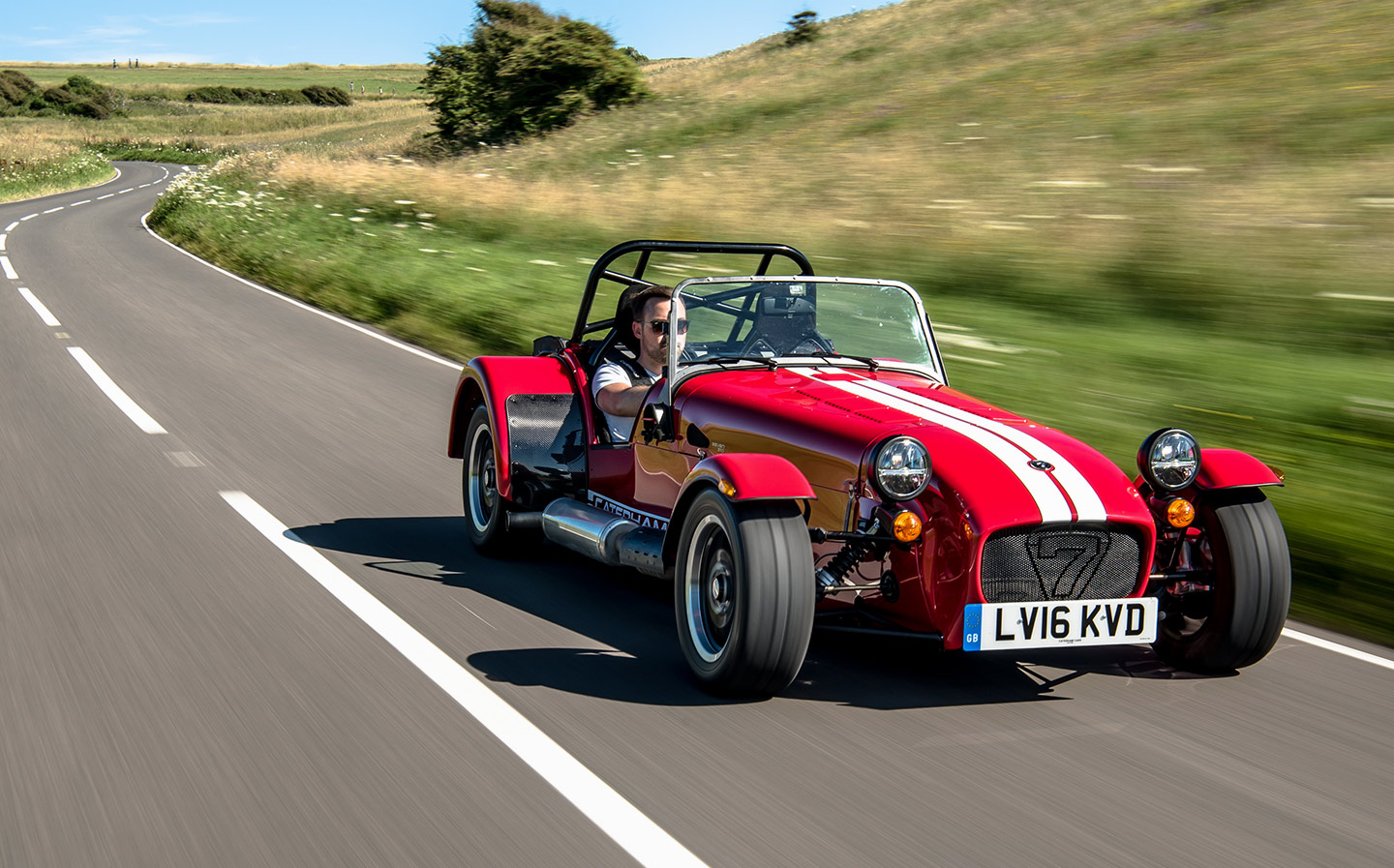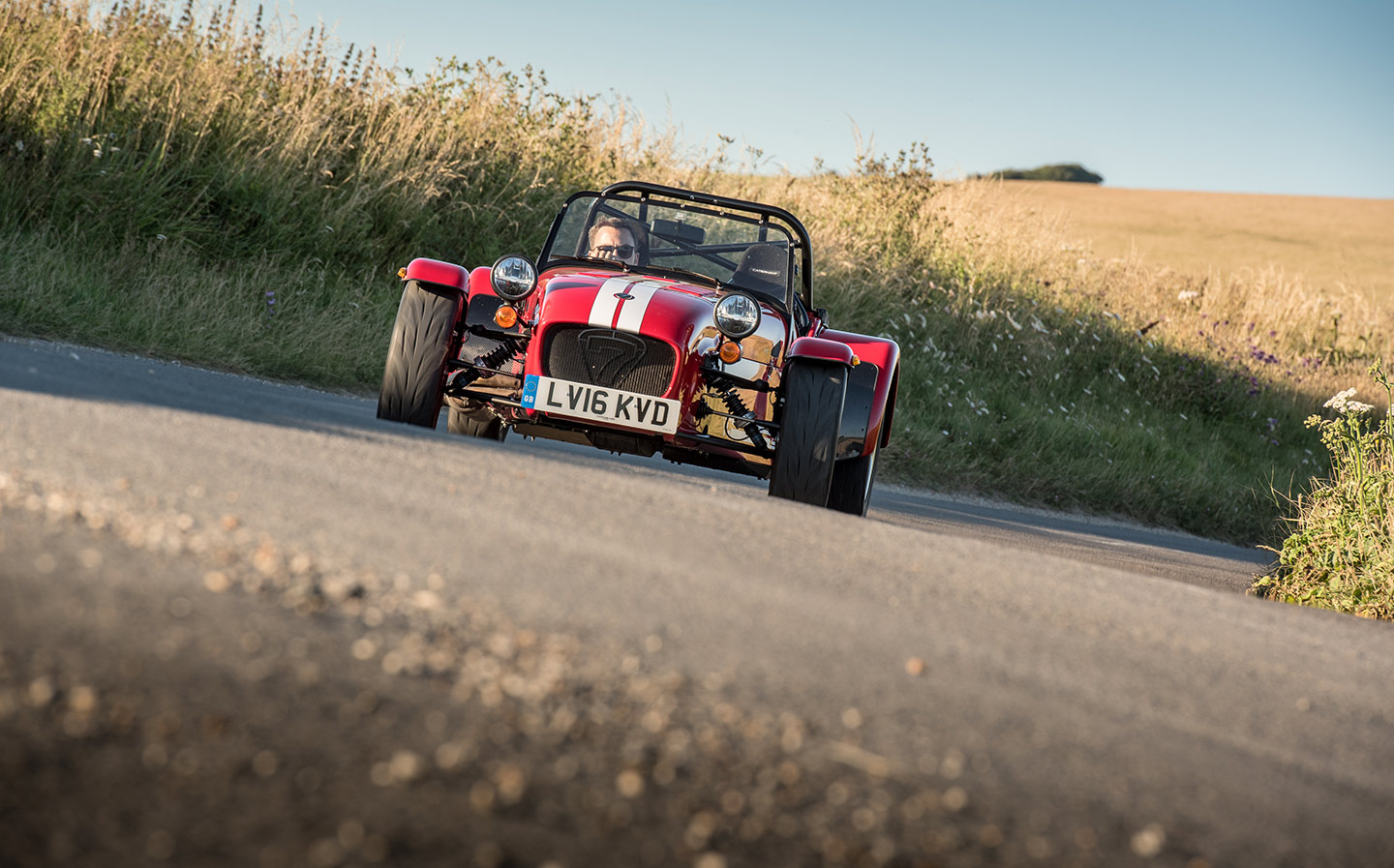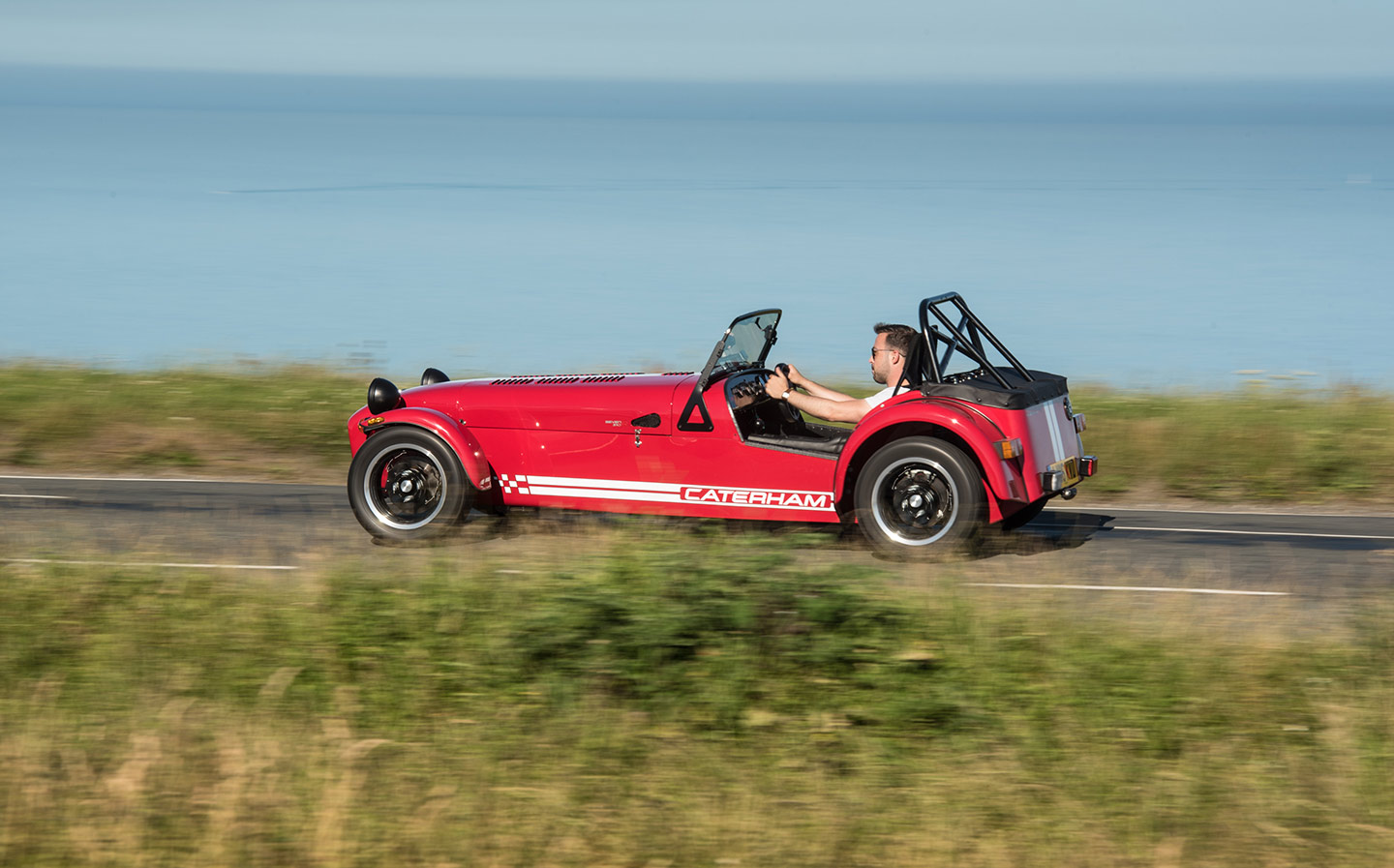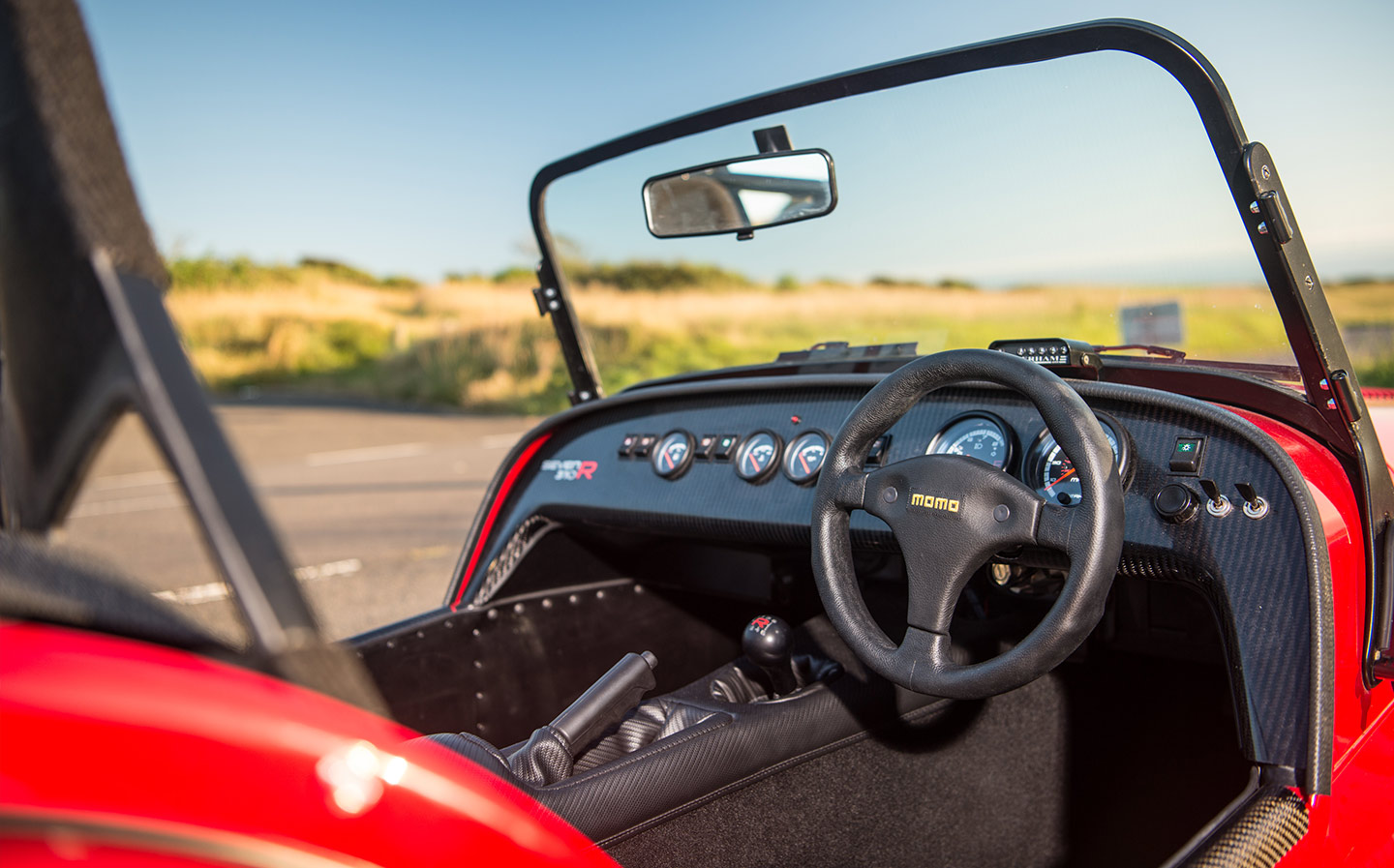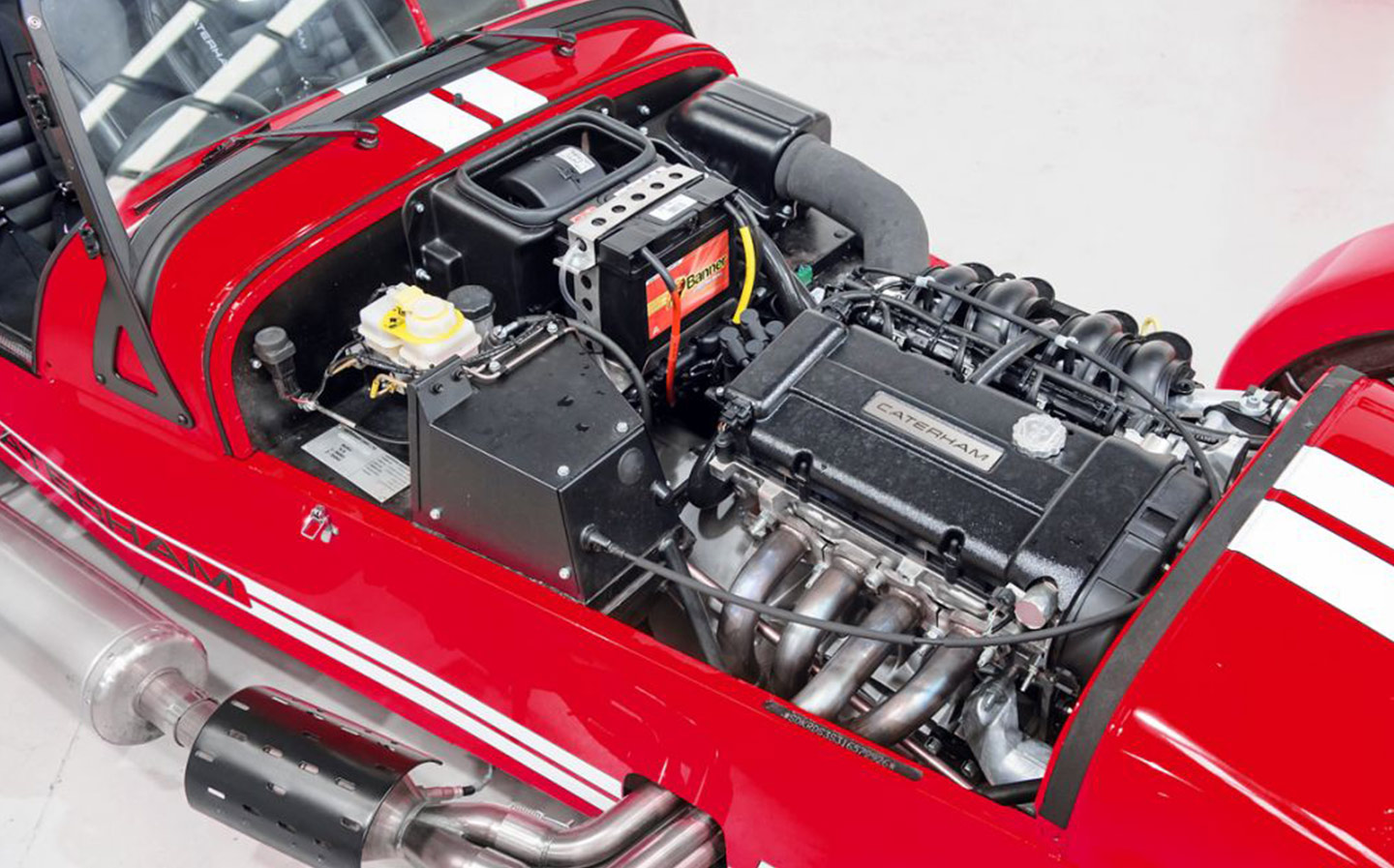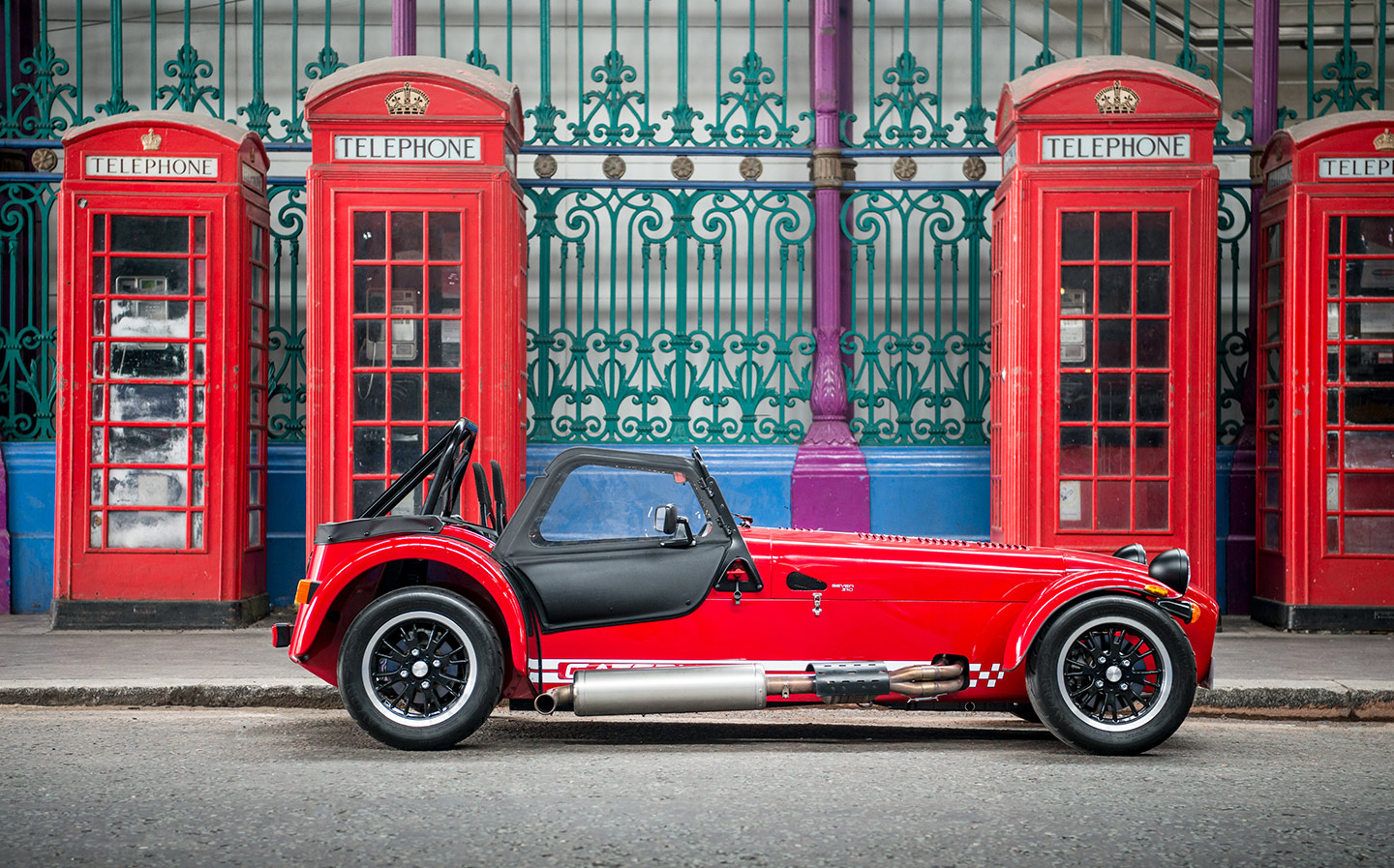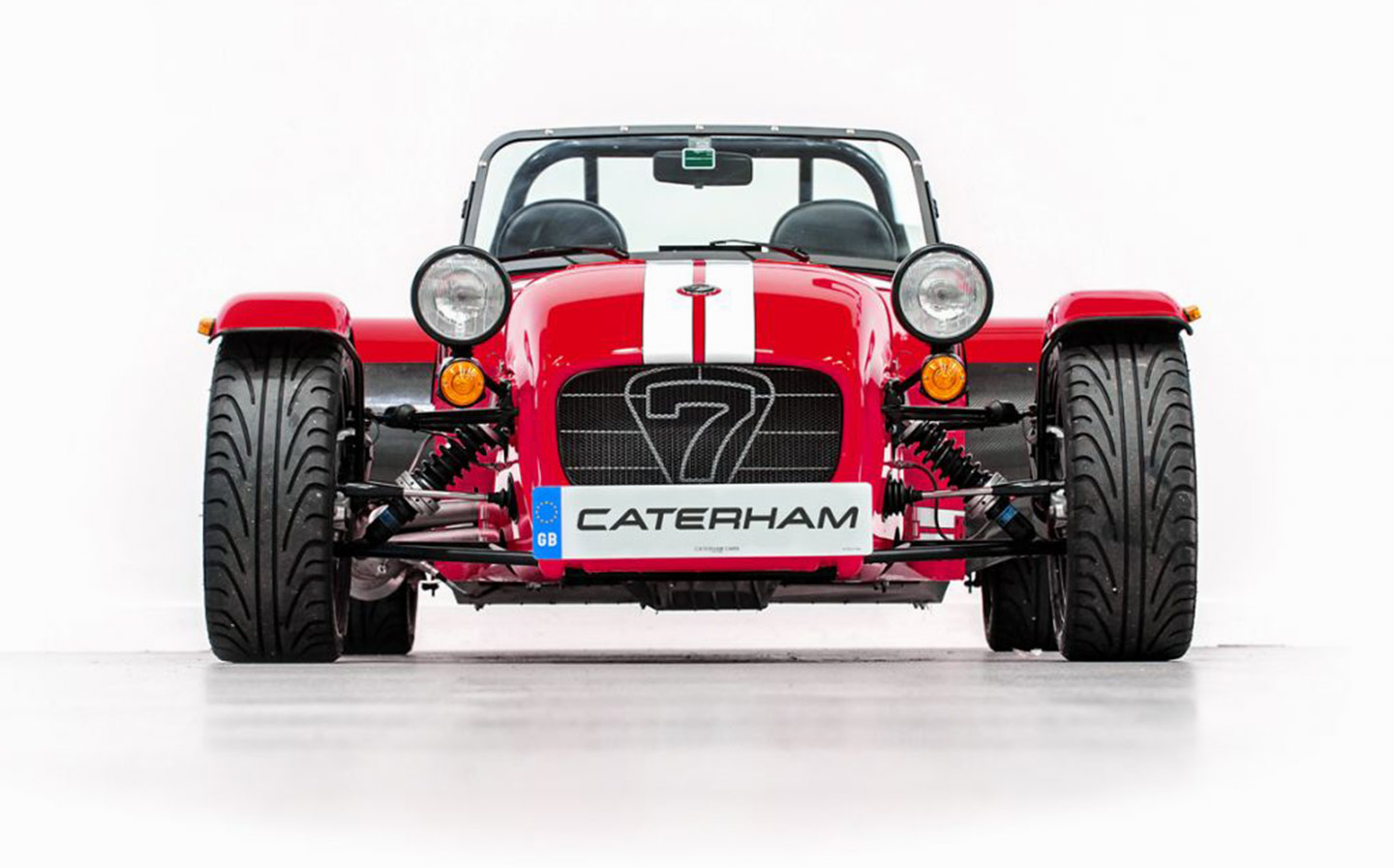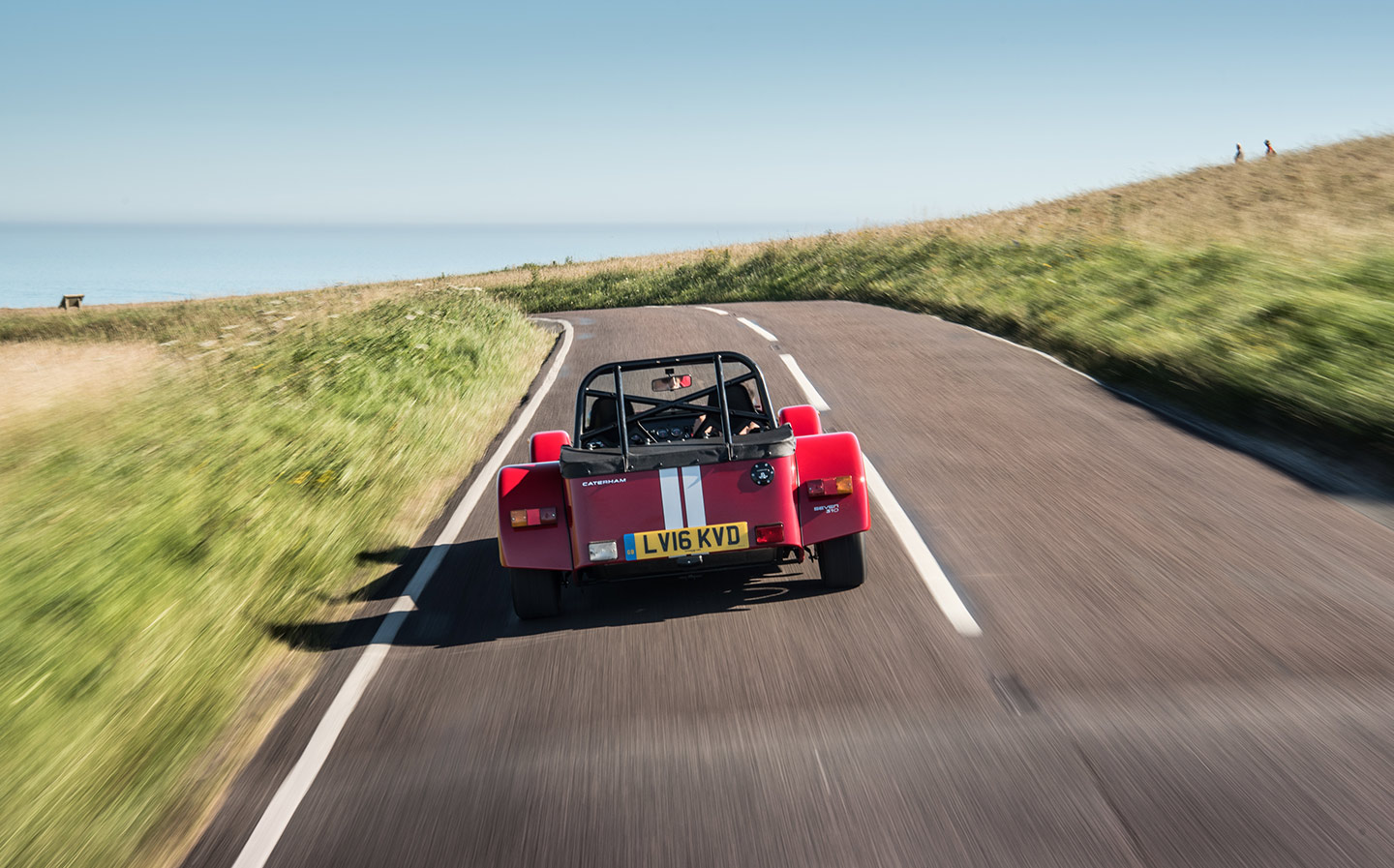Caterham Seven 310 review
310 to Nirvana?
“If Caterham was only going to make one car for the rest of its days, this would be it,” declared the boss of Caterham Cars when the Seven 310 was unveiled, last summer. That’s a pretty bold thing to say when it’s not the range-topping version of its legendary lightweight British Sports car. It’s not the most affordable, either. The beauty of this version, says Caterham, is that it’s the perfect blend of power and handling; not too extreme and not too weedy.
The last Caterham Seven Driving tested was the 620 S, which features the company’s most extreme powerplant — a 2-litre supercharged Ford unit producing 310bhp. Weighing just 610kg, or less than half a Ford Focus, it blew our socks off. Or bobble hat, at least.
The experience behind the wheel of the new 310 is far less hair-raising. It has the same 1.6-litre Ford Sigma engine that can be found on the Seven 270, but with an uprated engine that was developed for the Caterham Seven Supersport racing series so that it now produces 152bhp instead of 135bhp. Caterham says it had only intended to offer 270 customers the more powerful engine as an upgrade (which it does), but decided the new engine deserved a model in its own right.
View the Caterham Sevens for sale on driving.co.uk
Combined with the featherweight chassis (the complete package weighs 540kg), the resulting 281bhp per tonne still makes the car feel very lively, but not ridiculously so. Max power comes at 7,000rpm and it’s more than possible to spin the rear wheels when pushing the needle that far round the dial, but it’s a car that will tend towards controlled understeer rather than spinning you round in circles and can feel surprisingly settled at a canter.
In fact, cruising around town is an enjoyable experience rather than the exhausting beast-taming chore of the 620 S. The latter sounds like an oil barrel full of angry hornets but the noise from the 310 exhaust is a low, distinctive growl with a few friendly pops from the exhaust when shifting down through the gears letting you know that, although it’s not a fire-breather, it’s no pussycat, either.
“The noise from the 310 exhaust is a low, distinctive growl with a few friendly pops from the exhaust when shifting down”
Meanwhile, the standard road suspension (sport suspension is available) keeps the car flat and level through corners while remaining compliant and offering comfort on uneven surfaces. There’s no need to avoid roads with particularly aggressive speed bumps, for example.
The cabin is less of a squeeze than the 620 S, too (particularly with the wide-body S5 chassis), with wider, more comfortable seats and a three-point seatbelt as standard, rather than a full racing harness, which makes climbing in and out less exhausting. Having said that, buyers may want the extra reassurance that the optional four-point harness (£250) provides.
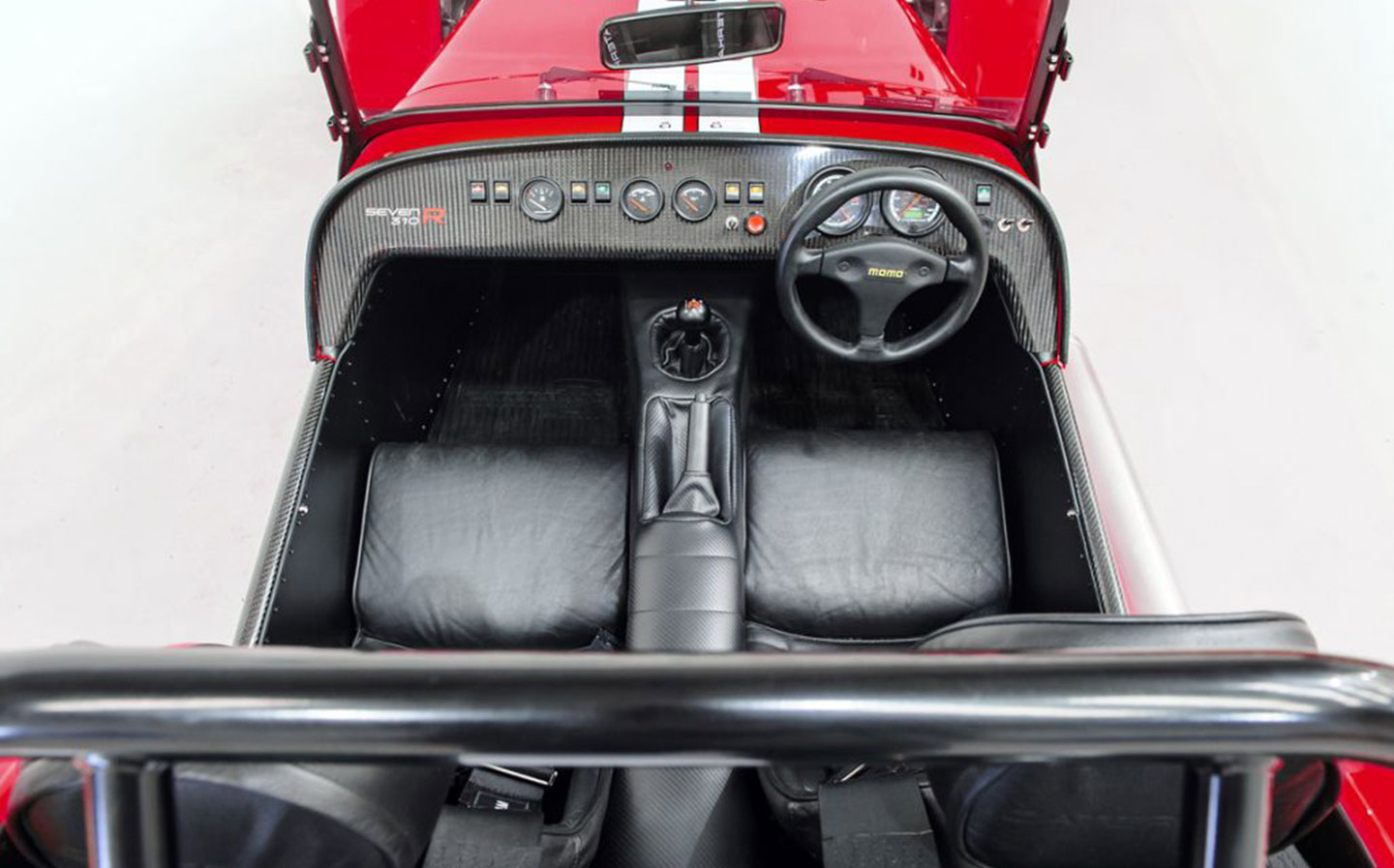
As standard you get rubber mats and boot floor carpet and black cloth seats but there isn’t much else from a comfort point of view. A fully-carpeted interior is £115 extra and if you want a heater, that’ll be a further £300. The latter, we would argue, is essential.
Our car came with the S Pack, which includes the above plus a full windscreen (an “aeroscreen” is standard), hood and sidescreens, black leather seats, Momo steering wheel and a choice of four paint finishes, as well as a unique key, gearknob and instruments, although at £2,995 buyers may want to pick and choose upgrades for the base car.
Those wishing to buy something more suited to track days can opt for Caterham’s R pack (pictured), which adds a limited slip differential, a lightweight flywheel, more powerful brakes, the sport suspension, racing seats and gearshift lights. But for us, the 310 works best as an all-rounder rather than a track-focused machine; the S Pack version is, indeed, a perfect blend of power, handling and relative comfort.
Having said that, climbing in and out over the side exhaust with the full hood attached is still an art not best suited to the less nimble. The appeal of a Caterham Seven, though, is that in an age of traction control, dual-zone climate control, parking sensors and Apple Car Play, it remains resolutely old-school. And long may it continue.
* As a low volume manufacturer, Caterham is not required to put its vehicles through the official NEDC economy and emissions tests


